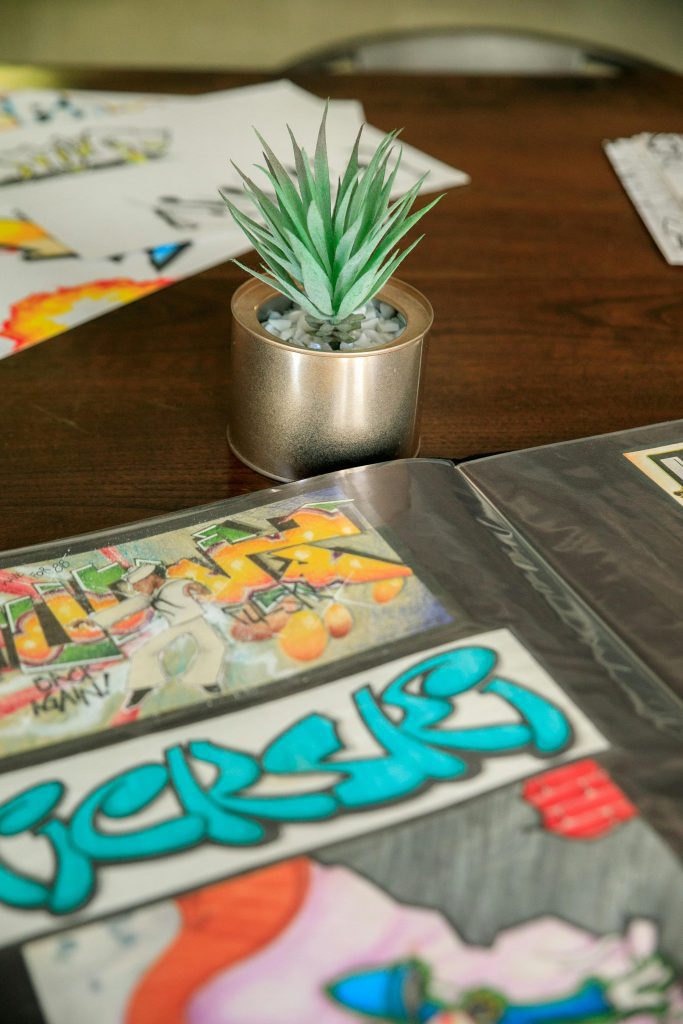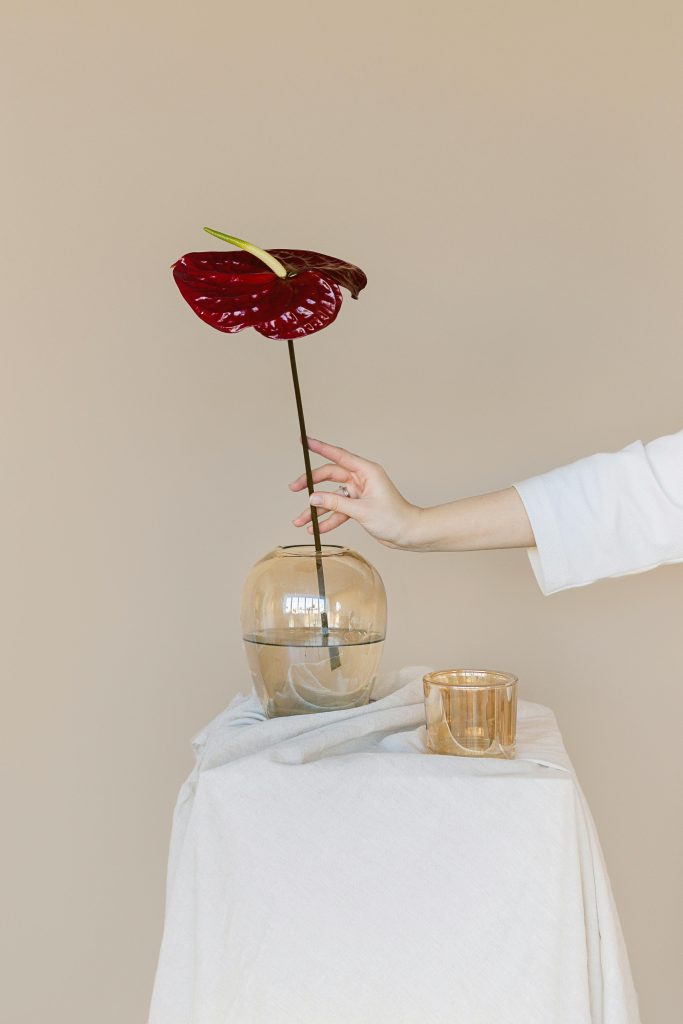How To Tell Your Artist Story Through Your Portfolio

Let’s Talk About Your Story (It’s Way More Interesting Than You Think)
Your portfolio isn’t just a place to stash your best work, it’s a personal archive of your growth, your heartbreaks, and your creative breakthroughs. It’s where you get to say, “Here’s how I became who I am as an artist.” And people want that. They don’t just want to see your paintings or sculptures, they want to feel your evolution through them.
Don’t worry about sounding polished. Instead, tap into the moments that made you fall in love with making. What experiences shaped the way you see the world? What stories keep returning to your work like recurring characters?
This isn’t about listing awards or following a linear timeline. It’s about building a portfolio that feels alive. A story that breathes. A reflection of the path you’ve walked, and are still walking.
So, pour a fresh cup of whatever makes you feel creative, and let’s build a portfolio that tells your story with color, chaos, and a whole lot of heart.
1. Start at the Heart of It All
Every story has a beginning, and yours is way more compelling than you think. When did art first become part of your life? Was it scribbling in notebooks, painting with your fingers, or doodling during class? Those moments matter.
Use this section like a heart-to-heart with your reader. What was the spark that lit the fire? Maybe it wasn’t just one moment, but a slow burn that built over time. Let that honesty shine.
Instead of “I have always loved art,” tell us what that love looks like. “I used to draw constellations on my bedroom walls with chalk because I wanted to sleep under the stars.” That sticks.
Even if you’re self-taught or still figuring things out, that’s a story worth telling. People connect with the courage it takes to follow a creative urge.
Let this be the moment your reader leans in and says, “Wow, I feel like I know them already.”
And remember: your beginning doesn’t have to be dramatic to be meaningful. Sometimes the quietest starts grow into the boldest voices.
2. Let Each Piece Be a Chapter
Your art isn’t just beautiful, it’s meaningful. So let each piece tell part of your story. Don’t drop an image and move on. Stay a while. Tell us what was happening behind the scenes.
What inspired it? What were you feeling? Did the piece surprise you? Was it easy, or did it fight back? Even a short caption can build a bridge between the work and the viewer.
Example: “This piece started as a study in color and ended as an apology I didn’t know I needed to make.” That’s powerful.
Avoid generic titles and descriptions. You don’t need to sound academic. Instead, sound like you. The you that made the piece, not the version trying to impress anyone.
And if the work is messy or unresolved? That’s still part of the journey. Let it live here, too.
Show the contrast, early versus recent work, or different moods. This keeps the portfolio dynamic and emotionally rich.

3. Arrange for Emotion, Not Just Aesthetics
When curating your portfolio, think like a storyteller. Arrange your work in a way that takes the viewer on an emotional journey, not just a visual one.
Start with something bold or tender, whatever feels most “you.” Then guide us through shifts: themes, colors, feelings. Build a rhythm that mirrors your path.
It doesn’t have to be chronological. In fact, playing with emotional contrast can highlight your growth. Place a loud piece next to a quiet one. Pair joy with grief. Show the spectrum.
Ask yourself: What do I want someone to feel as they scroll through this? Surprise? Peace? Wonder? Let that lead the layout.
And yes, trust your intuition. If something feels out of place, it probably is. If it gives you goosebumps in a certain order? That’s the magic.
You might even include a note like, “This is how I’d walk you through it if we were standing together.” It brings a lovely sense of presence.
4. Use Words That Sound Like You
Your words should feel like a conversation, not a job interview. You’re not applying for an award, you’re inviting someone into your world.
So write like you talk. Like you’re chatting with a friend over late-night tea. Say what you really mean.
Instead of “This work explores identity,” maybe try, “I made this while thinking about what it means to belong in a place that’s never fully claimed you.”
Don’t worry about sounding clever. Worry about sounding honest. Readers don’t want perfection, they want real.
Your personality is part of your art. Let it shine in your writing, too. It’s what makes the story unforgettable.
Think of your captions and statements as little postcards from your creative life. Write like you’re writing home.
5. Share the Highs and the Not-So-Highs
It’s tempting to only show the shiny bits, but the messy parts are just as important. They show resilience, depth, and humanity.
Talk about the pieces that took forever. The ones you almost gave up on. The shows you didn’t get into, and the unexpected wins that followed.
Share your missteps and breakthroughs. Maybe a “failed” piece led to a whole new direction. Maybe a critique stung, but helped you grow.
When you let people see your struggle, they appreciate your successes more. They root for you because they’ve seen what it took to get there.
This doesn’t mean oversharing, it means storytelling with soul. Your vulnerability might just be what inspires someone else to keep going.
Failure isn’t the opposite of progress. It’s part of the same path. Let that truth live in your portfolio.
6. Tell the Truth About Your Creative Shifts
Your art is allowed to evolve. In fact, it should. If your style or subject matter changed, talk about why.
Did life throw you a curveball? Did you fall in love with a new material or process? These shifts are fascinating, and they reveal your growth.
Example: “I used to work in bold colors until grief taught me to see in muted tones. Now, color feels like breathwork, something I return to with intention.”
Highlight transitional pieces. Let them bridge your past and present. Show how each body of work is part of a larger narrative.
People want to see your becoming. Let them.
Include reflections on what you’re still figuring out. That kind of honesty keeps your portfolio relatable.
7. Connect the Dots Between Mediums
If you work across mediums, you don’t need to apologize or over-explain. You just need to connect the dots.
Explain how one practice feeds another. “My embroidery influences how I approach negative space in painting.” Or, “My video work mirrors the pacing I explore in poetry.”
Let this be a celebration of your curiosity. You are not scattered, you are multifaceted. Your range is part of your voice.
Structure your portfolio in a way that guides the viewer. Group similar works, then bridge with personal insights.
They’ll walk away feeling like they understand the bigger picture, not just a series of isolated pieces.
Showcasing your range is like inviting someone into all the different rooms of your creative home.
8. Let Collaboration Be Part of Your Journey
Art doesn’t always happen in isolation. If collaboration is part of your practice, include it proudly.
Talk about group exhibitions, collectives, partnerships. What did you learn? What sparked? How did your voice shift in the context of others?
Name your collaborators if they’re comfortable with it. Mention what made the experience special.
This is especially powerful if your work is rooted in community, social practice, or shared spaces. It gives context to your creative relationships.
Collaboration is part of your artistic DNA. Don’t downplay it, honor it.
It also shows adaptability and generosity, qualities that curators and clients value deeply.

9. Speak to the Viewer’s Experience
As much as your portfolio is about you, it’s also about them, the person viewing it. Think about what they’ll take away.
Guide them gently. Use clear sections. Offer captions or insights where needed. Make the experience feel like a guided walk, not a puzzle.
Let your tone stay consistent, welcoming, warm, thoughtful. Even small touches (like calling a section “Works that healed me” instead of “Mixed Media”) add personality.
If you want someone to feel something, spell it out. “This piece helped me process loneliness. I hope it helps you feel seen.”
Create connection by inviting interpretation and emotion. Art is personal, and portfolios can be too.
Think of your portfolio as a quiet conversation, one that leaves the viewer feeling closer to you, not confused.
10. Keep the Ending Open, You’re Still Writing It
Don’t wrap up your story with a neat little bow. You’re not done. None of us are.
Leave space in your portfolio for works in progress, future plans, or even questions you’re sitting with. “Lately I’ve been exploring softness and silence, more to come.”
This invites the viewer to follow your journey beyond the portfolio. To wonder what’s next with you.
A living portfolio doesn’t need a hard stop. It just needs honesty.
So say, “Here’s where I am right now.” That’s enough. That’s powerful.
Even a simple note like, “I’m currently working on a new series exploring memory,” gives the viewer a reason to return.
Want help putting this into practice?
If you’re ready to create a portfolio that feels like a true reflection of your voice, The Ultimate Portfolio Builder for Artists is a beautiful place to begin. It includes everything from prompts to layout templates, making the whole process a lot less overwhelming and a lot more you.
Your Journey Deserves to Be Seen
Your portfolio is more than a showcase, it’s your creative fingerprint. Let it carry your voice, your joy, your vulnerability.
Tell the truth. Be generous. Speak in your own rhythm.
And above all, know this: your story matters. The way you share it? That’s a gift.
You don’t have to wait until it’s perfect to start. Just start. And keep going.
